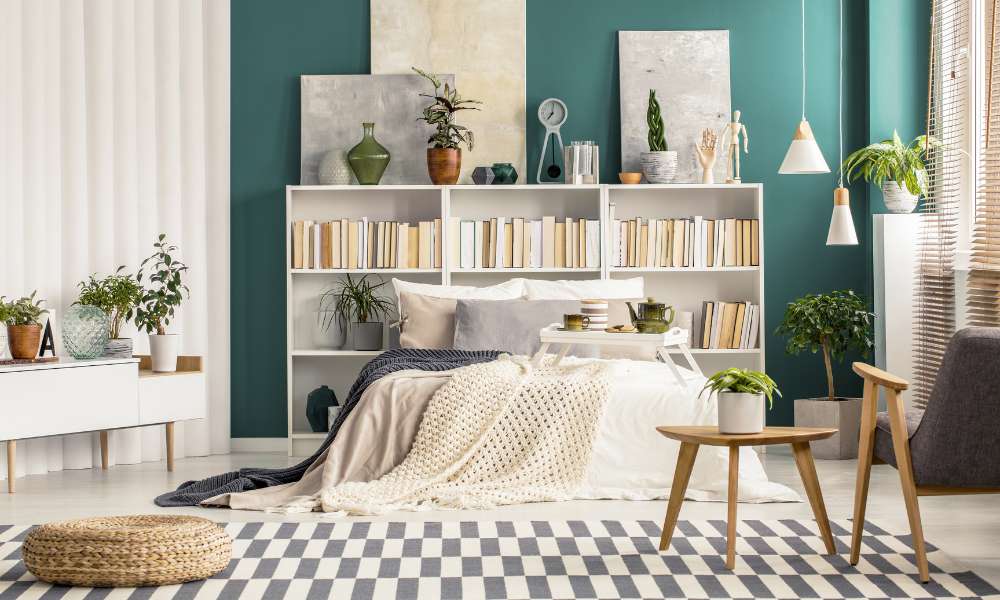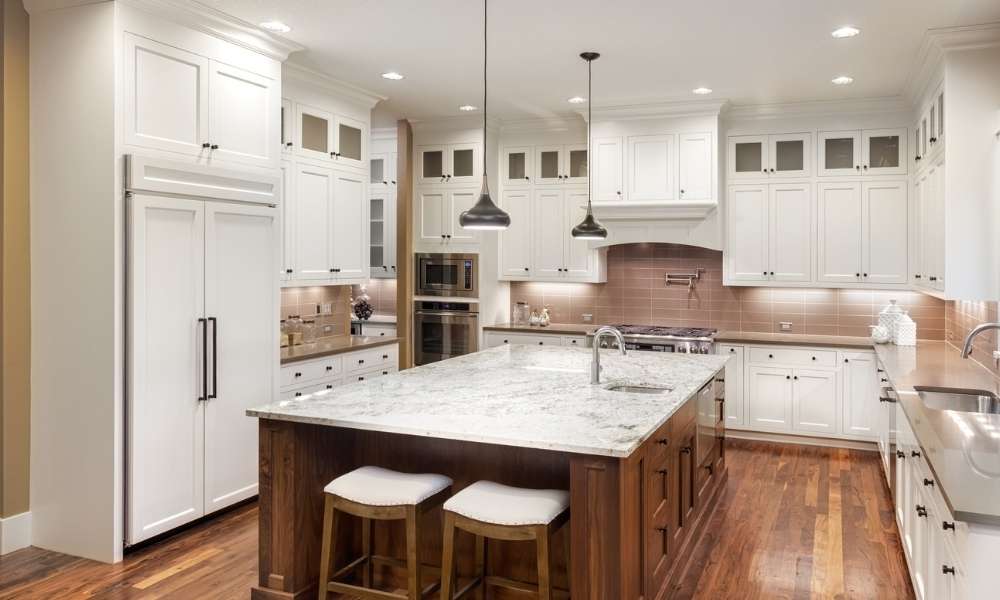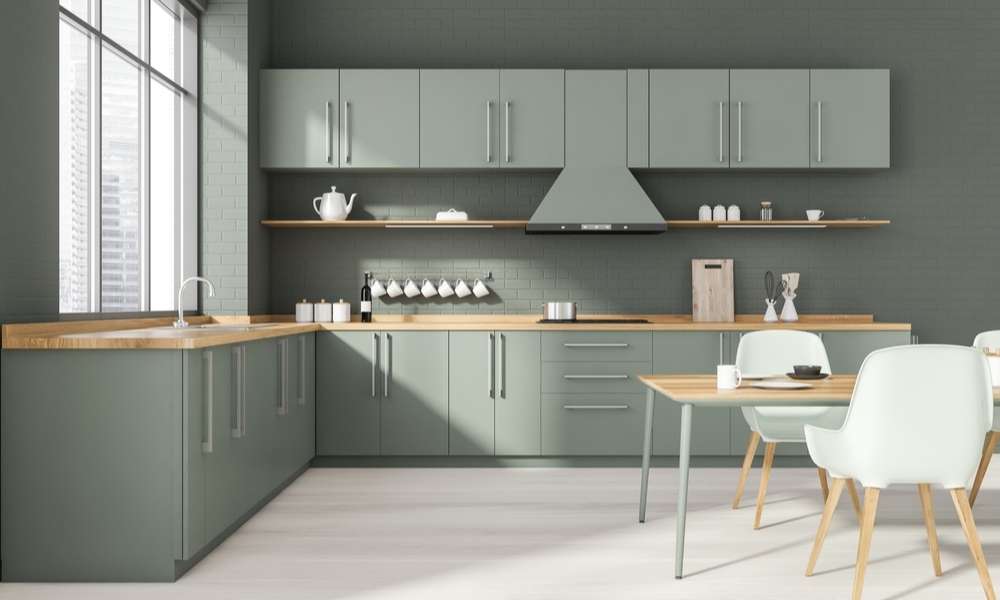Creating a cozy and stylish bedroom begins with mastering the art of layering rugs, a design technique that not only adds texture and depth to your space but also offers a multitude of benefits. Knowing how to layer rugs in your bedroom effectively can transform your floor into a canvas of comfort and elegance, elevating the room’s overall ambiance. This approach allows for personal creativity, enabling you to mix and match different styles and textures to achieve a look that’s uniquely yours. Importantly, it enhances comfort underfoot, provides additional insulation, and delineates spaces within the bedroom, making it a practical as well as a visually appealing choice. Embracing the concept of layering rugs in the bedroom is not just about aesthetic appeal; it’s about crafting a space that feels both inviting and intimately personal.
What Are Some Popular Rug Layering Combinations For A Bedroom?
Layering rugs in a bedroom can add depth, texture, and visual interest to the space. One popular combination is to layer a large neutral-colored rug as the base layer, such as a jute or sisal rug, with a smaller patterned or colorful rug on top. This creates a cohesive look while also adding a pop of color or design element to the room.
Can I Layer Rugs In A Bedroom With Wall-To-Wall Carpeting?
Yes, you can definitely layer rugs in a bedroom with wall-to-wall carpeting. This can be a great way to add texture, color, and visual interest to the room while also creating a cozy and inviting atmosphere. When layering rugs over carpet, it’s important to consider the size and placement of the rugs to ensure they complement each other and do not create a cluttered look.
Layering Rugs To Highlight Specific Areas
Layering rugs in the bedroom isn’t just about adding warmth and texture; it’s a strategic way to spotlight specific areas of your space. Whether it’s drawing attention to a cozy reading nook or accentuating the area around your bed as the room’s focal point, the thoughtful placement of rugs can direct the eye and emphasize the zones you deem most important. This technique allows for creative expression in design, enabling you to blend various colors, patterns, and textures for a bespoke look. Moreover, it can help in defining the function of distinct areas within the bedroom, making the space not only visually appealing but also more organized and intuitive to navigate.
Enhancing Dimension In Bedroom Area
Adding a layer of rugs to your bedroom is akin to adding layers of depth and dimension to a painting. Each rug acts as a brushstroke, contributing to the overall composition and feel of the space. This approach can effectively make the room appear larger and more inviting, as the varied textures and patterns play with perception, leading the eye across the room. The contrast between different rug sizes and shapes can break up the monotony of the floor, introducing an element of surprise and visual interest that keeps the space dynamic and engaging.
Layering For Different Bedroom Styles
1. Modern Bedroom Rug
Incorporating layering rugs into a modern bedroom can significantly enhance the space’s minimalist and sleek aesthetic. The key is to focus on simplicity and texture. Opt for a large, neutral-colored base rug that complements the room’s color scheme, such as a low-pile gray or black rug, which can anchor the space without overwhelming it. Overlay this with a smaller, textured rug, perhaps in a geometric pattern or a bold, abstract design that introduces a pop of color or a touch of intrigue. This combination can add depth and interest to a modern bedroom while maintaining the clean lines and uncluttered feel that are hallmarks of the modern style. The strategic use of rugs not only adds visual interest but also enhances comfort, making the bedroom more inviting.
2. Traditional Bedroom Rug
Layering rugs in a traditional bedroom offers an opportunity to celebrate intricate designs and rich, warm colors that characterize this timeless style. Start with a large, classic Oriental or Persian rug as the foundation, featuring deep reds, blues, or greens interwoven with complex patterns that tell a story of heritage and craftsmanship. Over this, you might layer a smaller, more subdued rug in a solid color or with a minimal pattern to highlight a seating area or the space beside the bed. This approach not only pays homage to the sophistication and elegance of traditional decor but also adds a luxurious feel underfoot. By carefully selecting and positioning rugs, you can create a sense of grandeur and continuity in a traditional bedroom, making it a serene retreat that respects the past while offering contemporary comfort.
3. Bohemian Bedroom Rug
The Bohemian style, with its emphasis on eclectic and carefree elements, provides a unique canvas for layering rugs. This approach is all about mixing colors, textures, and patterns to reflect an adventurous spirit and a love for global influences. Begin with a brightly colored or boldly patterned base rug that sets a vibrant tone for the room. Think Moroccan designs, Southwestern patterns, or even shag rugs that offer a tactile experience. Atop this, layer smaller, uniquely textured rugs—perhaps a vintage kilim or a handmade boucherouite rug—to introduce contrast and interest. The beauty of layering rugs in a Bohemian bedroom lies in the ability to create a space that feels personal and unstructured, yet cohesive. This style invites you to break the rules, combining unexpected elements to forge a space that’s both comfortable and visually captivating.
Addressing Issues Of Slippage
Addressing issues of slippage when placing a rug in the bedroom is crucial to ensure safety and prevent accidents. One effective solution is to use a rug pad underneath the rug, as it provides grip and stability on smooth flooring surfaces. Additionally, choosing a rug with a non-slip backing or adding double-sided carpet tape to secure the edges can help prevent any movement.
Utilizing Diy Techniques
Embracing DIY techniques for layer rugs in the bedroom can unleash your creativity and allow for a truly personalized space. This might involve repurposing old rugs, combining them in unconventional ways, or even creating your own rugs from scratch. Such projects not only add a unique touch to your bedroom but can also be a fun and rewarding endeavor. Experimenting with dyeing techniques, patchwork, or even simple rug placements can yield impressive results, transforming your bedroom into a reflection of your personal style and ingenuity.
Mixing Patterns And Textures
1. Harmonizing Patterns In Layered Rugs
Harmonizing patterns in layered rugs is akin to conducting an orchestra where each piece plays in sync, contributing to a beautiful symphony. The secret lies in finding a common thread—be it color, theme, or scale—that binds different patterns together. Start with a base rug that boasts a subtle pattern or a neutral palette. This foundational piece sets the stage, allowing for more intricate or bold patterns to be introduced on top. The key is to ensure that there is a visual connection between the rugs, which can be achieved by repeating a specific hue or by choosing patterns that complement rather than compete with each other. By thoughtfully selecting patterns that echo elements of each other, you can create a layered look that feels intentional and cohesive.
2. Experimenting With Contrasting Textures
Contrasting textures can add depth and interest to any room, making the experimentation with different rug textures an exciting design strategy. Mix plush, soft rugs with rougher, natural fibers to introduce a tactile dimension to your flooring. This contrast not only enhances the visual appeal but also invites touch, making the space more inviting. When layering rugs with contrasting textures, consider the functionality of the space. A softer rug on top can provide a cozy surface for bare feet, while a durable, textured rug underneath can offer practicality and grip. The juxtaposition of textures can create a luxurious feeling underfoot, adding to the overall sensory experience of the room.
3. Achieving A Cohesive Look With Diverse Elements
The challenge and beauty of mixing patterns and textures lie in achieving a cohesive look despite the diversity of elements. To accomplish this, focus on a unifying theme or color scheme that runs through your choice of rugs. This could be a specific hue that appears in each rug or a thematic link, such as geometric patterns or nature-inspired designs. Layering rugs offers a unique opportunity to tell a story through your decor, where each piece contributes to a larger narrative. It’s also important to consider the spatial arrangement of the rugs. Overlapping them in a thoughtful manner can help to define different areas within a room while maintaining a unified design flow. Ultimately, achieving a cohesive look is about balancing diversity with harmony, allowing each piece to shine while contributing to the overall aesthetic of the space.
Upcycling And Repurposing For Layering
Upcycling and repurposing for layering is not just a cost-effective approach but also an environmentally friendly way to enhance your bedroom decor. By giving old rugs a new lease on life, you not only reduce waste but also add a unique and personal touch to your space. Whether it’s a vintage rug that’s been in the family for generations or a thrift store find with potential, integrating these pieces into your layering project can create a look that’s both stylish and sustainable. This method allows for endless creativity, enabling you to mix and match different textures, colors, and patterns for a truly bespoke bedroom floor.
Nesting Smaller Mat Within Larger Ones
Nesting smaller mats within larger ones is an ingenious strategy for adding depth and interest to your bedroom’s floor. This technique not only highlights the smaller rug’s design but also frames it, creating a visually appealing focal point. By carefully selecting complementary colors and patterns, you can achieve a harmonious look that enhances the room’s overall decor. Additionally, this approach allows for flexibility, making it easy to update your bedroom’s look by simply swapping out the smaller rug for a new design or color scheme.
Dealing With Uneven Flooring Surfaces
Dealing with uneven flooring surfaces can be a challenge when layering rugs, but it’s not insurmountable. Employing thicker rugs as a base can help to even out minor discrepancies in the floor’s surface, providing a smoother foundation for additional layers. In more severe cases, using a combination of padding and strategically placed furniture can help to disguise and stabilize uneven areas. This not only ensures a level surface for your layered rugs but also adds to the comfort and usability of your bedroom.
The Final Thought
Layer rugs in a bedroom can add warmth, style, and dimension to the space. By following the tips and guidelines outlined in this article, you can create a visually appealing and functional layered rug look that complements your bedroom decor. Experiment with different textures, patterns, and sizes to achieve the desired effect. Remember to consider both aesthetics and practicality when choosing and placing your rugs. With careful planning and attention to detail, you can transform your bedroom into a cozy and inviting retreat that reflects your personal style. Start layering rugs in your bedroom today to elevate its design and comfort level.





